2013 | NATIVe
Cinematic Discoveries
In 2013, the Berlinale is introducing a brand new series focusing on the cinematic storytelling of Indigenous peoples. In its first year the programme comprises 24 features, documentaries and short films from Australia, Oceania, North America and the Arctic region. The series is called ”NATIVe - A Journey into Indigenous Cinema”. In our interview, curator Maryanne Redpath emphasises the diversity of Indigenous films and explains how her intention for the series is to create a one-of-a-kind platform for exchange.
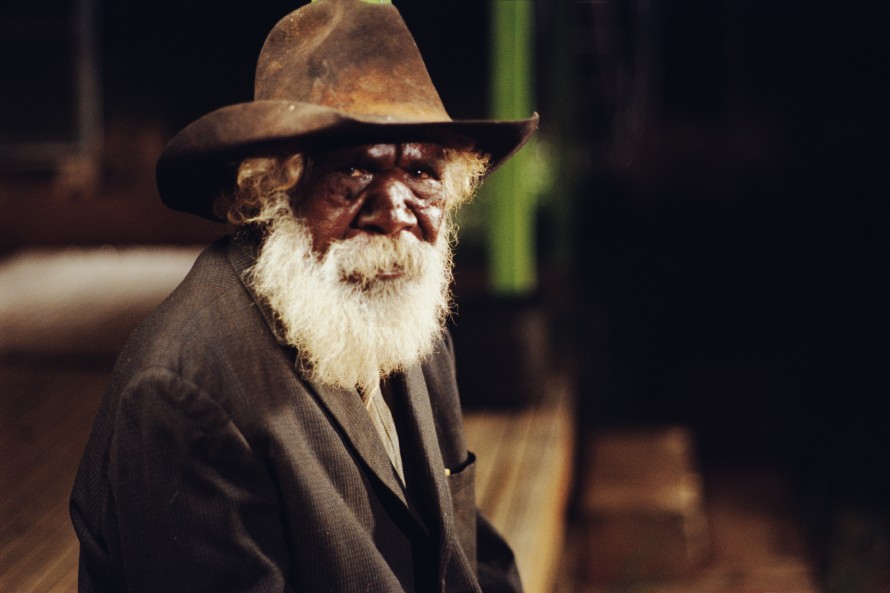
Ted Egan in Green Bush by Warwick Thornton
Where did the idea for this series originate?
As a delegate for the Berlinale I travel to Australia and New Zealand every year to watch films and make a preliminary selection for all sections of the festival. Over the years we’ve made very good connections to the Aboriginal and Maori film industry. About four or five years ago Dieter Kosslick came with me and together we attended a reception from the Indigenous Unit of Screen Australia, where Indigenous filmmakers get together every year. That year the gathering was held at Sydney Harbour. The atmosphere was fabulous and we met some really impressive people. As a result of the trip we decided to launch this project.
How did other regions get involved?
At first we were thinking in terms of a one-off series. However, we made so many new contacts in the US, Canada and also Norway and South America, that it soon turned into a kind of network. The area of Indigenous cinema has turned out to be so rich and diverse that we can imagine continuing with the series. The title “NATIVe – A Journey into Indigenous Cinema” already points to a journey that does not necessarily have a concrete beginning and end, but is a work in progress. We want to keep it that way. This year we are focusing on four regions that we’ve consciously defined beyond political borders: Oceania, Australia, North America and the Arctic. This allows us to go further than just scratching the surface and attempt a deeper exploration of Indigenous cultures. Altogether, there are 24 films in the programme.
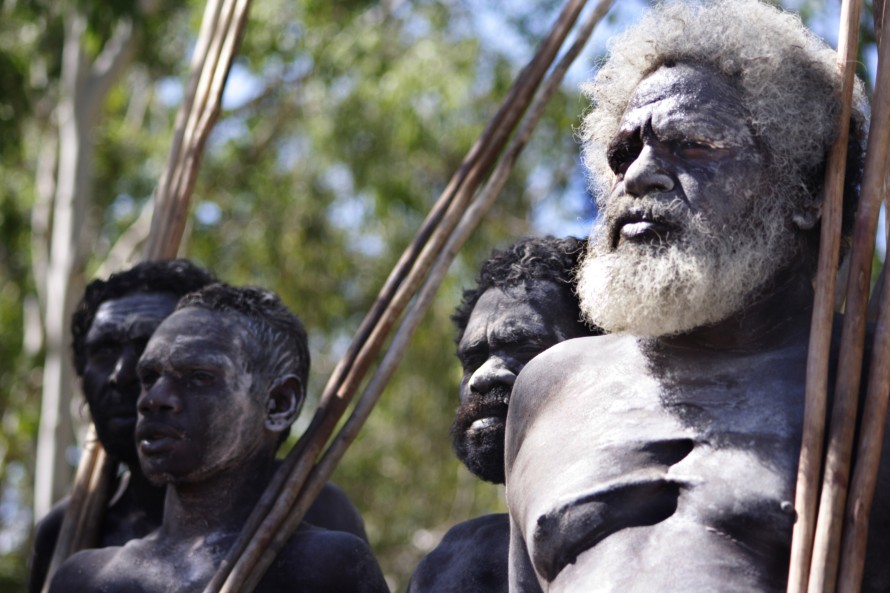
Richard Birrinbirrin in Ten Canoes by Rolf de Heer
How would you define “native” and “Indigenous” and what are the selection criteria for this series?
I would prefer to avoid the word “definition”. Instead I envision a continuum that includes all kinds of films – on both Indigenous and non-Indigenous topics. Some films are more at home in the Indigenous world, some less so. It is a dynamic process and it is definitely noteworthy that almost all the films in this series have been made by Indigenous filmmakers.
Indigenous Australians, Maori, Inuit and Native Americans only began to take cameras into their own hands about 40 years ago. Above all we are more interested in who made the films than who they are about. However, the origins of the film teams are not the only criteria. For example, in my opinion Ten Canoes by Rolf de Heer clearly belongs in the Indigenous category, even though the director was born in the Netherlands. This is not about rigidly defining prevailing genres. You have to think beyond the cliché of shamanic sagas that make it to the big screen. There is a place for those as well, but also explosive movies about the contemporary everyday lives of Indigenous peoples. This series shows and celebrates the diversity of Indigenous cinematic art. We invite participants from all over the world for discussion and exchange. The Berlinale offers a perfect platform to bring attention to this cinematic landscape and we are curious to see what fruit this commitment will bear.
We’ve drawn a lot from a 2007 UNESCO declaration of rights for the protection of Indigenous people and for universally implementing those rights. The declaration refers to formerly colonised world populations who were robbed of their cultures and their land, even if they are still living in their traditional regions, but are not able to participate in established local political power structures.
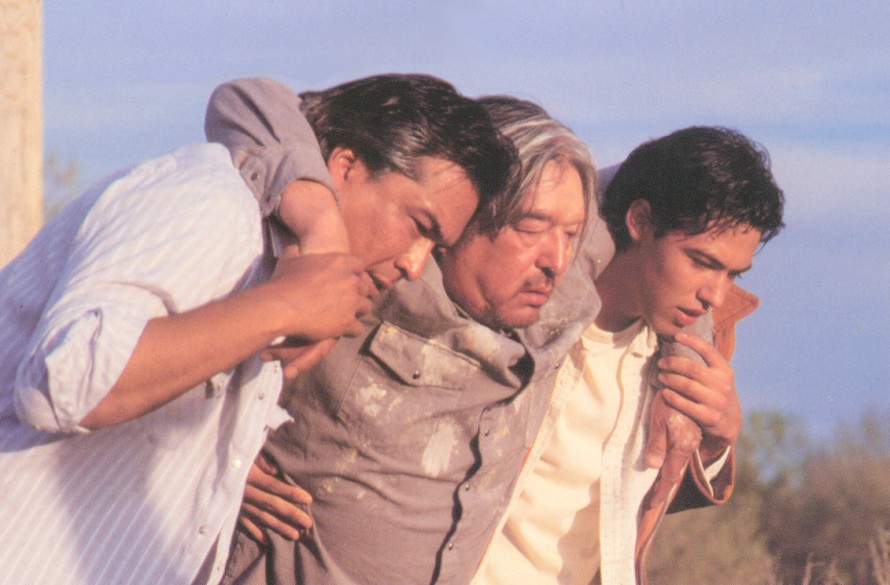
Eric Schweig, Graham Greene and Noah Watts in Skins by Chris Eyre
Doesn’t a new awareness about Indigenous people also call for new terminology?
Since the UNESCO declaration, “Indigenous” is the only word that is more or less acceptable to all Indigenous people. I also believe that the terminology is especially important for us, whose culture is dominated by western values - to make these other cultures more comprehensible. When the director of Skins, Chris Eyre, was once asked whether he would like to be addressed as “Indigenous”, “Native American” or “Cheyenne” or as something else he replied: “Chris. My name is Chris.” Every definition has its limitations. This project also addresses how to talk about that.
Fascinating Documentaries
Notably, most of the series’ older films are documentaries. Feature films shot by Indigenous directors seemed to be rare in the earlier years.
Yes, indeed. At first, filmmaking was seen as an opportunity to preserve one’s own culture and tradition and to visually capture the centuries old oral tradition in a new way.
Older films by non-Indigenous filmmakers use a mostly ethnographic, observational methodology. Even with integrity and the fabulous stories they tell, the result is always an outside view. The National Film Board of Canada has another approach. They started years ago with the explicit permission of Indigenous communities to film sun ceremonies on traditional land to preserve traditions. This is exactly what matters to us as well: asking permission. We’ve been working with ten international advisors who make up the real backbone of the project.
Another good example from our programme is the 30-minute documentary Ngangkari by Erica Glynn, about spiritual healers in Australia. Erica, who is also an advisor for the project, filmed three Ngangkari at work a few years ago, two of whom have sadly since passed away. The Aboriginal people see their dead as spirits or as ghosts, who shouldn’t really be shown to others, let alone appear in cinema. Before we added the film to our series, Erica asked for permission to screen it. There is a notice at the beginning of all Australian Aboriginal films warning Aboriginal peoples and Torres Straits Islanders that what follows may contain images of those who have since passed away .
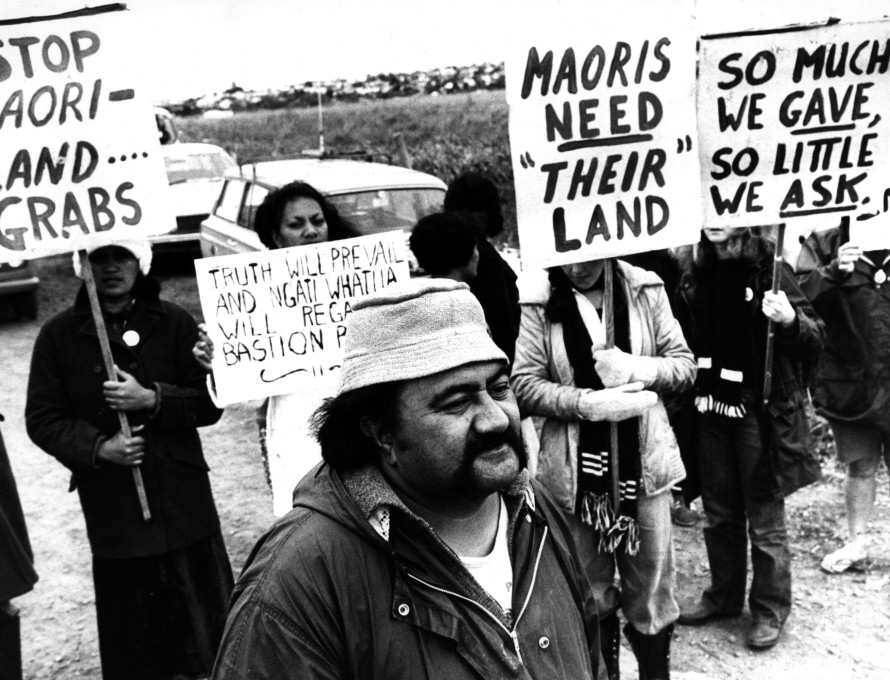
Bastion Point Day 507 by Merata Mita, Leon Narbey und Gerd Pohlmann
What are the other documentaries about?
We are showing Ngangkari together with two other documentaries. Together they form a cornerstone of the series.
Bastion Point Day 507 is an historical document. Since the 1970s, the Maori protest movement has fought to regain land rights that were promised to them. Merata Mita, a co-director of the film who died a year and a half ago, was a central figure of Indigenous film known far beyond her native New Zealand. She worked at the Sundance Indigenous Lab and was a dedicated mentor to young, Indigenous filmmakers. We want to honour her with this series.
The third film is also by an important Indigenous female director, Alanis Obomsawin - Richard Cardinal: Cry from the Diary of a Métis Child is a film that tells the story of the so-called Stolen Generations. Until recently, it was not unusual in Canada as well as in Australia that children were separated from their people and their families. The case of Richard Cardinal was particularly tragic during the 1980s in Canada. He was a poetically gifted, sensitive boy who was passed through 28 foster families and homes. He took his own life when he was 17. The film is based on his diaries and has a strong message that is hard to ignore.
All these films take a unique approach to their topics and protagonists, such as Merata Mita’s second documentary Saving Grace, Te Whakarauora Tangata. Mercilessly, she contrasts the widely accepted view of violent, tattooed Maori males with a softer, gentler image and shows how the men take responsibility for their actions.
Cinematic Challenges
You have pointed out special ways of dealing with particular topics that might trigger conflicts, as in the case of Ngangkari, which is about healers who had already died. In what way does this create a unique narrative? Or are these films mainly aimed towards the general public and conform to a western way of viewing patterns?
This can vary a lot. Several films in the programme have had successful runs in cinemas and at international festivals. Beneath Clouds screened in Competition at the Berlinale in 2002, On the Ice won the Best First Feature Award in 2011. Ten Canoes and Samson & Delilah received accolades at Cannes. Other films, like Ngati by Barry Barclay or Peter Burger’s Turangawaewae – A Place to Stand are true discoveries.
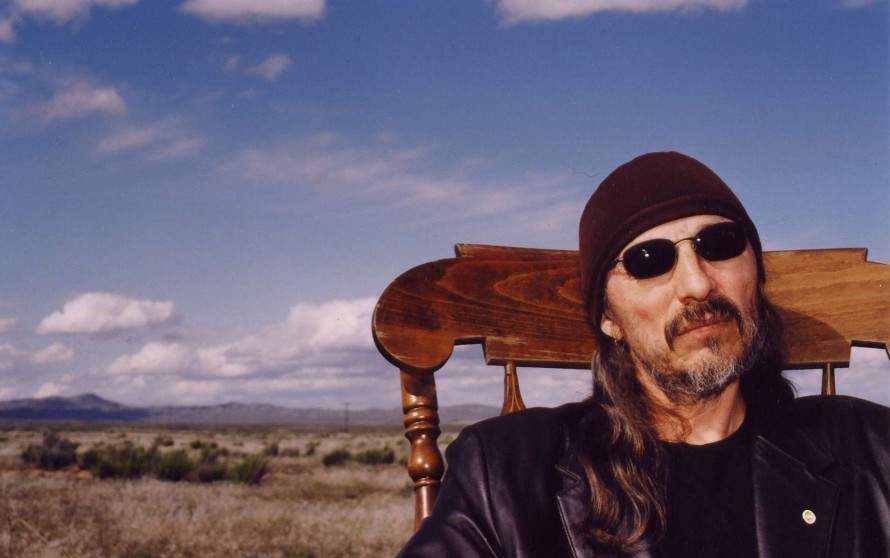
John Trudell in Trudell by Heather Rae
Like in every culture, Indigenous cinema has its own particular modes of expression. What’s special here is that you get to see new ways of life, new paths and new realities from an inside point of view, which marks new territory for a European audience. Trudell, for example, is a documentary about the activist, poet, actor and singer John Trudell, who is perhaps not so well known in Europe, yet he is one of the central figures of the American Indian Movement. The film shows the highlights of his life and work.
There are discoveries not just with regards to content, but also at the formal level. Ten Canoes, for example, has a three-tier narrative structure that weaves three different levels of time with one another and tells an ancient myth from pre-colonial Australia. The film beautifully meets the challenge to convey these levels cinematically – including the spiritual level . The Sámi , for instance, tell, dance, and drum their stories for days or weeks on end - day and night, without a beginning, middle or end, as we understand it. How can this kind of magic be made into a film without alienating outsiders? How can this be conveyed to the viewer? These are exciting questions which we want to investigate more.
Boy is one of the films I’m especially looking forward to in this series. It’s a feisty comedy that has sad undertones and a completely natural sense of depth. Director Taika Waititi, who is also a member of this year’s First Feature Jury, has his own signature style in his very special sense of humour. Boy paints a contemporary picture of post-post-colonial society. Boy is an eleven-year-old who lives with his grandma and siblings in a run-down house on New Zealand’s East Coast. His mother died during the birth of his brother. His dad is in prison, but to Boy, he’s the greatest. The second hero in Boy’s life is Michael Jackson. When his dad gets out of prison and drives up in a cool car wearing a leather jacket it throws Boy into emotional turmoil. He tries everything to win over his dad, but of course nothing turns out as he had imagined.
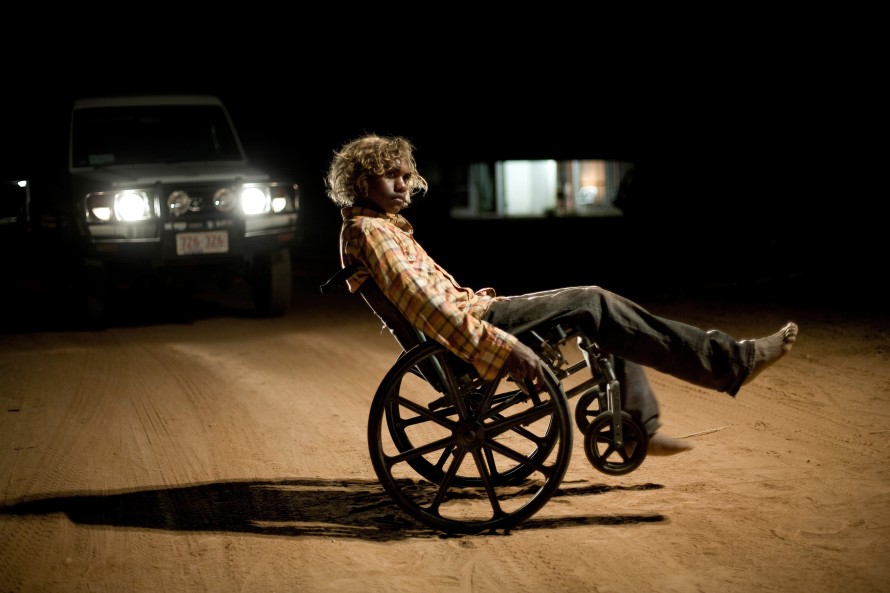
Rowan McNamara in Samson & Delilah by Warwick Thornton
Innovative Genre Cinema
On the Ice and Samson & Delilah also have touches of genre…
On the Ice is a fantastic thriller set in a landscape of Alaskan permafrost. Qualli and Aivaaq are two laid-back young guys who go to hip-hop parties at night, but by day hunt sea lions in the traditional way of the Iñupiat. After a deadly encounter, the story turns into a suspenseful thriller.
Samson & Delilah by Warwick Thornton is a road movie and an abstract re-interpretation of the biblical story of the same name. At the same time the film tells of the tender first love between two traumatised teens. They leave their familiar, but also desperate environment in the Australian outback and make it to the city against all odds. Both get into life threatening situations. The story shows one of the most heart-wrenching drug withdrawals I have ever watched in a movie. Samson & Delilah is a very finely drawn film, reflecting on our western views and at the same time conveying much about the life of Indigenous Australians and the power of their traditions.
Are there any common themes in Indigenous cinema that are independent of particular regions?
Some of the films address what its like to leave a familiar environment, to feel lost in the “new world” and the resulting conflicts. Trying to rediscover one’s roots again often provides an anchor. This is where I see some definite thematic commonalities between films beyond their different regions. It will also be exciting to see what new connections might emerge from discussions and exchanges among the filmmakers themselves.